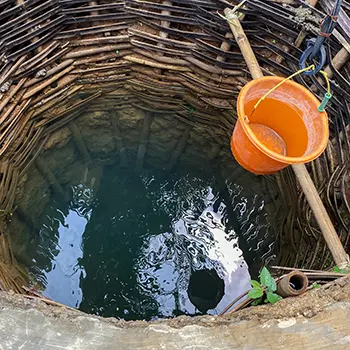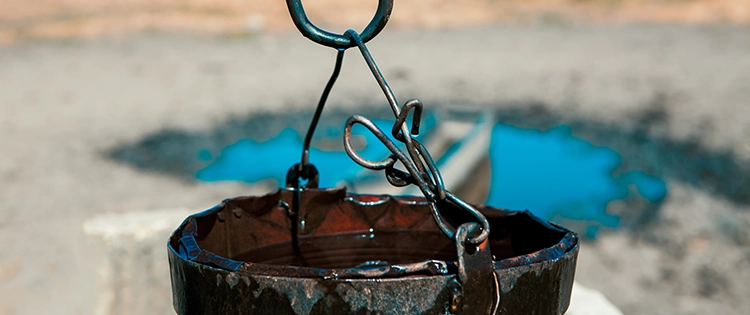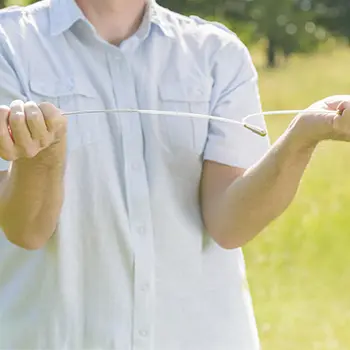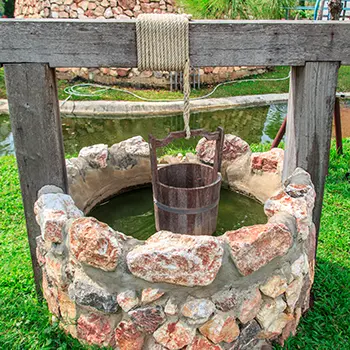“Humans don’t live by surface water alone,” says an ancient proverb. For millennia, homesteaders have depended on the invaluable resource of groundwater to meet a myriad of needs, from irrigation to drinking water.
However, this subterranean water source remains invisible to the naked eye, posing a challenge for water scientists tasked with locating and accessing it. Groundwater, found in aquifers beneath the earth’s surface, is a vital, yet often overlooked component of the global water supply.
That’s why locating underground sources before investing in a well is so crucial.
Everything To Know About Groundwater In Your Homestead
Groundwater is the lifeblood of a homestead ecosystem. This precious resource, formed through the water cycle, is stored in underground aquifers – chambers within the earth’s crust.
On a homestead, you may encounter different types of aquifers, including unconfined, confined, and perched varieties, each with its own unique characteristics and implications for water availability.
The abundance of groundwater on your property is heavily influenced by factors such as the local geology, precipitation patterns, and overall landscape. Understanding these factors will be key as you begin your quest to uncover your homestead’s hidden water treasure.
Identifying Potential Water Source Signs
One of the best free resources for locating groundwater is simply observing your land closely. Your homestead property may already be hinting at the presence of an underground water source if you know where to look.
Natural Indicators:
- Vegetation Changes: Patches of visibly greener, lusher vegetation amid drier surroundings often indicate a higher water table below.
- Drainage Patterns: Groundwater seepage and runoff create telltale drainage channels, streams, springs, or boggy areas.
- Key Plant Species: Certain tree and plant varieties like willow, cottonwood, cattails, and rushes thrive in high moisture conditions.
Man-Made Signs:
- Old foundations, cellars, or mining shafts sometimes intersect with underground streams or aquifers.
- Existing wells, even if not currently active, demonstrate available groundwater in the area.
Topographic maps and aerial/satellite imagery can reveal subtle contour features like buried stream beds that may conceal groundwater flows.
Geological Surveys And Well Reports
Before you can start your underground water exploration, it’s essential to thoroughly evaluate your homestead property. Researching the history and geography of your land can yield valuable information about past water sources, aquifer levels, and drainage patterns.
Consulting local water tables and groundwater maps for your rural area can also help you understand the broader context of your property’s water resources. If there’s an existing well on your new property, having it inspected and flow tested may reveal if it can simply be rehabilitated rather than drilling a whole new well from scratch.
Methods for Locating An Underground Water Source
Once you’ve done your due diligence in understanding your homestead’s groundwater potential, it’s time to put your research into action with these two methods:
1. Dowsing/Water Witching
While viewed skeptically by many, the ancient practice of dowsing or “water witching” to detect groundwater has persisted for centuries. Modern dowsers typically use hand-held Y-shaped rods or pendulums that are said to dip or twitch when passing over underground water sources.
The proposed mechanism behind dowsing involves scientific concepts like electromagnetism and sensitivity to magnetic fields that some people may unconsciously detect. Independent studies have yielded mixed results on its effectiveness. If you want to try dowsing your property yourself, simply:
- Fashion dowsing rods from green branches pruned into a Y-shape or any non-magnetic metal rods.
- Hold rods loosely, keeping them parallel while walking slowly with light arm movements.
- Watch for dipping, rotating, or crossing motions that may indicate a response.
- Mark potential hot spots and compare them against other detection methods.
Even dowsing skeptics admit it can sometimes identify productive areas.
But for maximum accuracy, consider hiring an experienced local dowser who has successfully located many wells in your region – their finely-tuned intuition may be your best bet.
2. Electrical Resistivity Tests
One of the most scientifically robust groundwater prospecting methods is conducting electrical resistivity tests using specialized meters and probes. This geophysical technique is non-invasive and reveals subsurface characteristics based on how different soils and rock types resist electrical current flows.
How It Works:
- Metal probes inserted in the ground emit low-frequency electrical currents
- The resistivity meter measures fluctuations in voltage gradients and resistance levels
- Data is analyzed to map zones of higher electrical conductivity that indicate moisture and possible aquifers
Resistivity surveys accurately pinpoint horizontal and vertical extents of water tables, as well as factors like the porosity of the aquifer material and water salinity levels.
While you can purchase basic DIY resistivity meters designed for well detection, professional hydrogeological survey companies have advanced equipment like:
- Multi-electrode resistivity rigs for deeper sensing and 3D imaging
- Automated data collection and modeling software analysis
- Combining resistivity with electromagnetic, seismic, or other geophysical methods
Interpret the results correctly by working closely with qualified technicians. As a general rule, lower resistivity readings detected at consistent depths indicate promising groundwater reserves to investigate further.
Determining The Depth And Quality Of The Water Source
With the location of your underground water source identified, it’s crucial to determine the depth of the water table and assess the quality of the water. Measuring the depth of the water table will help you select the appropriate well type and design for your homestead’s needs.
Analyzing the water’s pH, mineral content, and other key indicators will ensure that the source meets your homestead’s water quality requirements for drinking, irrigating, and livestock use. Understanding the water’s flow rate and potential yield will also help you plan for the long-term sustainability of your water supply.
Developing the Water Source on Your Homestead
Armed with the information about your underground water source, you can now proceed to develop it for your homestead’s use. Choosing the right well type – whether a dug, drilled, or driven well – will depend on factors like the depth of the water table, the local geology, and your specific needs.
Installing the necessary equipment, such as a pump, storage tank, and distribution system, will bring your water source to life. Maintaining the well and monitoring its performance over time will ensure the long-term viability of this precious resource.
Regulatory Considerations To Be On The Lookout For
Before you begin any well drilling or water development activities, it’s crucial to understand the local laws and regulations regarding water rights in your rural area. Obtaining the necessary permits for well drilling and use on your homestead is essential to comply with environmental and safety standards.
What Are The Costs And Financial Considerations?
Developing an underground water source on your homestead can be a significant investment, but one that can pay dividends in the long run. Factors such as the well type, depth, and any necessary equipment will all contribute to the overall cost.
However, there may be financial incentives, such as tax credits or government programs, that can help offset these expenses. Carefully budgeting for the initial installation, as well as ongoing maintenance and operation, will ensure that your homestead water source remains a sustainable and cost-effective asset.
The path to groundwater self-sufficiency starts with diligent investigation above ground first. By investing upfront in locating reliable sources with the help of this guide, you’ll avoid the disappointments – and expenses – of drilling blind holes.
The Berry That Is Illegal To Grow (In Some States) But Perfectly Fine To Forage (Video)
5 Ingenious Methods To Get FREE WATER In All 50 States During A Crisis

















